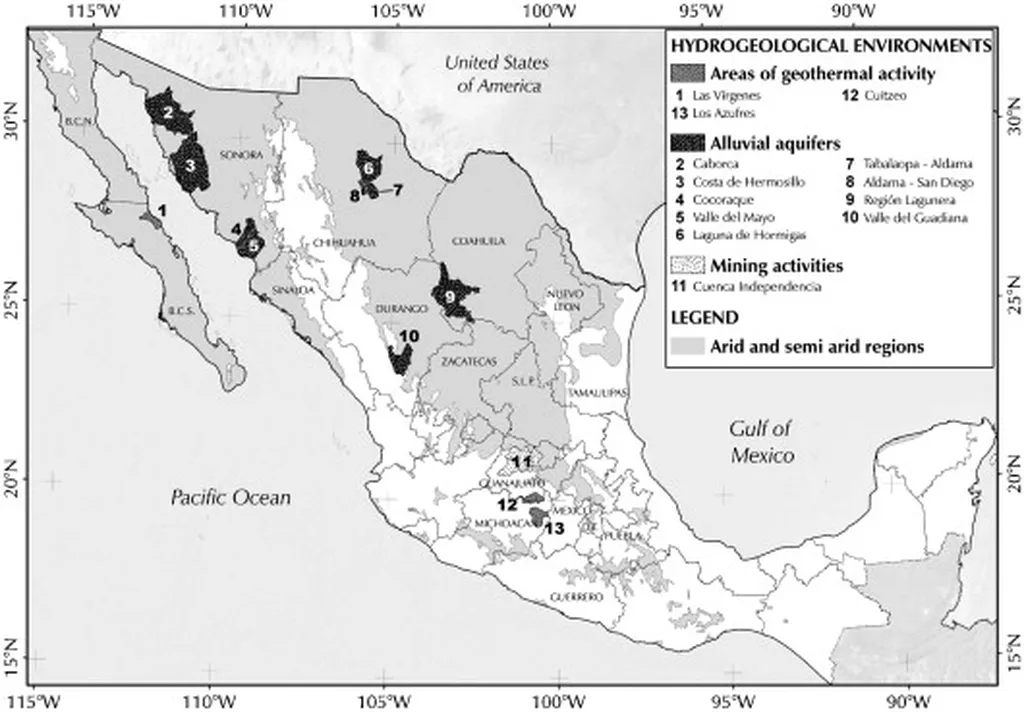In the heart of Mexico, the Aguascalientes Valley aquifer (AVA) is a lifeline, supplying water to nearly 1.35 million people and irrigating over 65,000 hectares of farmland. However, this vital resource is under threat from elevated levels of fluoride and arsenic, exceeding both national and international safety standards. A recent study published in the journal ‘Frontiers in Water’ (translated as ‘Frontiers in Water’) sheds light on this pressing issue and offers a roadmap for sustainable management.
Led by Roxana Nicte Ha Hughes Lomelin from the Hydraulics Department at Universidad Michoacana de San Nicolás de Hidalgo in Morelia, Mexico, the research team delved into the AVA’s historical data to understand the extent of the problem. Their findings reveal that fluoride concentrations average 2.30 mg/L, significantly higher than Mexico’s standard of 1.5 mg/L, with levels increasing over time. Arsenic concentrations, while lower, still average 0.0126 mg/L, surpassing the national limit of 0.01 mg/L, but showing a decreasing trend.
The team developed sophisticated groundwater flow and transport models to integrate regional hydrogeological and water quality datasets. These models provided a reliable reproduction of the aquifer’s hydrodynamic behavior and the spatial gradient of contaminant concentrations. “The piezometric level information was sufficient to reproduce the hydrodynamic behavior of the aquifer reliably,” Lomelin explains. “Our transient flow model successfully reproduced the spatial gradient of concentrations, highlighting areas of concern.”
The study underscores the urgent need for action to address water security issues within the AVA. Increasing drawdowns and rising concentrations of arsenic and fluoride pose significant risks to both public health and agricultural productivity. To mitigate these issues, the researchers recommend implementing sustainable practices, such as managed aquifer recharge and nature-based solutions, to restore groundwater levels and improve water quality.
The commercial implications for the energy sector are substantial. Agriculture, a major consumer of groundwater, is closely linked to the energy sector through the production and distribution of fertilizers, pesticides, and the operation of irrigation systems. Ensuring a sustainable water supply is crucial for maintaining agricultural productivity and energy efficiency.
This research not only highlights the critical state of the AVA but also provides a framework for similar aquifers facing contamination challenges. By integrating hydrogeological and water quality data, the study offers a blueprint for developing effective management strategies. As Lomelin notes, “Our models can be adapted to other regions, helping to identify potential contamination sources and inform policy decisions.”
The findings published in ‘Frontiers in Water’ serve as a wake-up call and a guide for stakeholders in the Aguascalientes Valley and beyond. The path to sustainable water management is clear, and the time to act is now. This research could shape future developments in groundwater management, emphasizing the need for proactive measures to ensure water security and sustainability.

